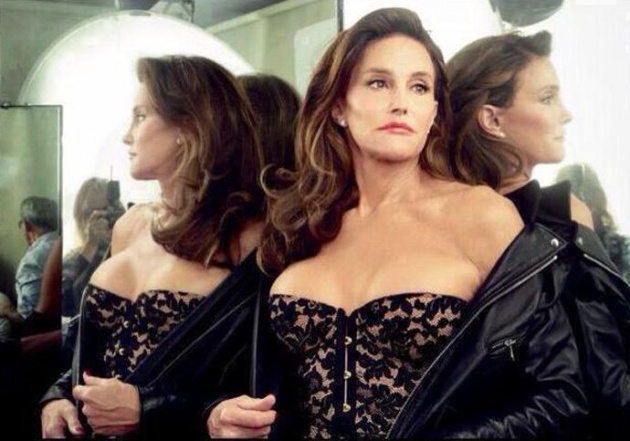On Monday the world was introduced to Caitlyn Jenner, formerly known as Bruce. She makes her debut on the July cover of Vanity Fair, and mere hours after she joined Twitter she had broken President Obama’s record for fastest Twitter account to reach one million followers.

The reactions on social media were immediate, and for the most part, incredibly supportive and positive. An automatic Twitter bot, @she_not_he, was set up to catch misgendering (using the wrong pronouns) and is actually helping people learn the proper pronoun use.
When I took on writing this article I thought I’d follow up on my piece about the interview with Diane Sawyer. I thought I might focus on the strides Caitlyn is making for transgender visibility, especially for the older generations, and how she’s showing young trans people that there is hope and a future for them in the world. When I asked my friend John, a transgender male, about his thoughts on Caitlyn he brought up her place of privilege as a white trans woman of wealth and celebrity status and compared it to the place of struggle and discrimination most transgender people live in, especially trans women of color. He also mentioned how her appearance is already being scrutinized and sensationalized by the media and the negative impact it could have for non-passing trans women.
On Laverne Cox’s blog, she reflects on the progress that has been made as well as acknowledges the work to be done stating, “Most trans folks don’t have the privileges Caitlyn and I now have. It is those trans folks we must continue to lift up, get them access to healthcare, jobs, housing, safe streets, safe schools and homes for our young people. We must lift up the stories of those most at risk, statistically trans people of color who are poor and working class.”
There are a lot of issues that should be discussed, all of them equally important, all of them equally unique and personal. John directed me to the GLAAD website and their reaction to the Vanity Fair spread, where they have also updated their tips for covering transgender stories like Caitlyn’s.
I had read through similar guidelines for my previous article, but upon reacquainting myself with transgender terminology, I came across the following tip concerning pre-transition life events,
DO avoid male pronouns and Caitlyn's prior name, even when referring to events in her past. For example, "Prior to her transition, Caitlyn Jenner won the gold medal in the men's decathlon at the Summer Olympics held in Montreal in 1976."
I had recently asked John about this very issue. We were friends in high school prior to his transition, and I had often wondered and stumbled through how to discuss those events in current conversations. Upon reflection, my question came from a place of continued misunderstanding and latent ignorance.
Because I realize I didn’t really understand what it means to be transgender, to grow up in a body that doesn’t match what’s in your mind, I didn’t get it. I will never fully understand what that’s like, because I’ve never questioned my gender or its relationship to my biological sex.
Up until now, transitioning, to me, meant changing your gender and how you present that gender to the world. But that’s not what it is.Transitioning is coming into and embracing the gender, and more importantly the person, you’ve always been but have never been able to show. Regardless of what name she had, or pronouns she used before, Caitlyn has always known she was female, even when she presented masculine traits. She has always been Caitlyn, even when people were calling her Bruce.
Again and again I am reminded of the importance to look beyond physical appearance, to focus on what is within a person, and to appreciate the beauty and resiliency of the human spirit. I am in awe of these people who are so boldly and courageously their most authentic selves. And while we have a lot of work to do, Caitlyn Jenner gives me hope that one day all persons will feel comfortable expressing their most authentic self.



